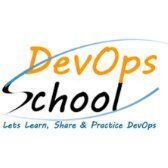#devops
-
How do you go about choosing a DevOps as a Service provider?
- 1 comment
- 15 views
-
Why Startups Should Invest in DevOps-as-a-Service
- 1 comment
- 49 views
-
DevOps Decoded: Expert Answers to Your Questions (Part 03)

- 1 comment
- 759 views
-
DevOps Adoption for IT Managers
- 1 comment
- 263 views
-
The Future of Devops: Shaping Tech In 2024
- 1 comment
- 823 views
-
The State of DevOps Automation assessment: How automated are you?
-
DevOps pioneers navigate organizational transformation
- 1 comment
- 52 views
-
CDF Survey Surfaces DevOps Progress and Challenges
- 1 comment
- 58 views
-
How Do DevOps Practices Influence the Gaming Industry? 3 Practical Applications of DevOps and How Fast Development Cycles Work
-
Attention DevOps engineers: Top managed container sessions to add to your Next ‘24 agenda
-
Why Understanding DevOps Could Be Your Key To Success In The Music Industry
-
Improving DevOps Pipeline: Detecting and Resolving Bottlenecks
-
Devops Dynamics: Testing Trends Unveiled
- 1 comment
- 58 views
-
Looking Ahead: Trends and Predictions of DevOps
- devops trends
- trends
- predictions
- devops
-
+1 more
Tagged with:
- 1 comment
- 73 views
-
A Brief History of DevOps and the Link to Cloud Development Environments
- 1 comment
- 63 views
-
Maximizing ROI with DevOps Implementation Services
- 1 comment
- 65 views
-
DevOps vs Agile: What’s the Difference?
- 5 comments
- 191 views
-
Using GKE and applying DevOps principles for scientific research at Stanford
-
Microsoft Certified: DevOps Engineer Expert – Exam AZ-400: Designing and Implementing Microsoft DevOps Solutions
- 1 comment
- 70 views
-
Navigating the Maze of SSDLC Models: A DevOps-Centric Analysis
- ssdlc models
- ssdlc
- models
- devops
-
+1 more
Tagged with:
- 1 comment
- 79 views


.png.6dd3056f38e93712a18d153891e8e0fc.png.1dbd1e5f05de09e66333e631e3342b83.png.933f4dc78ef5a5d2971934bd41ead8a1.png)









